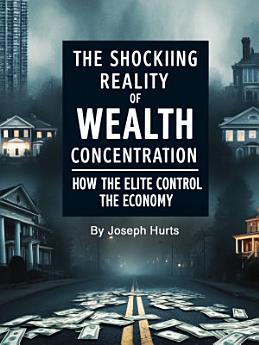The Shocking Reality of Wealth Concentration: How the Elite Control the Economy
About this ebook
The compound interest effect that drives wealth accumulation operates according to mathematical principles that create exponential growth for those with sufficient capital to invest, while the same principles work in reverse for those who must borrow money or who cannot accumulate significant assets. A person with one million dollars invested at a modest return rate generates more passive income annually than many full-time workers earn from their labor, and this passive income can be reinvested to generate even larger returns in subsequent years. Meanwhile, those without significant assets cannot access these wealth-building mechanisms and may actually lose ground financially due to inflation, debt service costs, and the high cost of being poor.
The statistical distributions that characterize wealth holdings reveal power law relationships where a tiny fraction of the population controls a disproportionate share of total wealth, and these distributions have become increasingly skewed over recent decades. The top one percent of wealth holders now control more wealth than the bottom fifty percent of the population combined in many developed countries, while the top one-tenth of one percent control more wealth than the entire bottom ninety percent. These statistical relationships are not random fluctuations but reflect systematic forces that concentrate wealth among those who already possess it.







